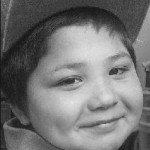By Chelyen Davis, http://news.fredericksburg.com
RICHMOND—On Friday, the Senate Rules Committee approved resolutions to grant state recognition to two different bands of Cherokee Indians in Virginia.
But no one on the committee, including the resolutions’ sponsors, could really explain how the two bands are different and distinct. No one spoke up to avow that the tribes met all the stringent criteria that used to be required for state recognition.
No one knew those things, in part, because there is no longer a Virginia Council on Indians to vet tribes’ applications for state recognition. That’s why the two Cherokee tribes are going through the General Assembly for recognition.
A resolution from Sen. Steve Newman, R–Lynchburg, grants state recognition to the United Cherokee Indian Tribe of
Virginia, known more commonly—according to his resolution—as the Buffalo Ridge Band of Cherokee.
Now based around Amherst, that tribe traces their roots back to Northumberland County on the Northern Neck. A House version of Newman’s bill was also approved by a committee on Thursday.
The other resolution comes from Sens. Jill Vogel, R–Winchester, and Kenny Alexander, D–Norfolk. It would grant state recognition to the Appalachian Cherokee Nation of Virginia—a tribe long based in the mountains of western and Southwest Virginia.
While the resolutions provide an outline of each tribe’s claims to state recognition, neither resolution could contain all the background documentation the council used to require. And both resolutions are careful to state that the “Commonwealth, by this resolution, does not address the question of whether the tribe has been continuously in existence since 1776,” which once was one of the many requirements for state recognition through the council.
The council had been responsible for vetting other tribes’ recognition efforts since 1983, when the General Assembly granted state recognition to eight tribes—a status that can offer tribes access to grants or standing to protest when, for example, their burial grounds are threatened.
The state then assigned to those tribes, through the Virginia Council on Indians, the task of vetting other tribes that wanted state recognition. Since then, just two tribes have won recognition through the council—the last in 1989.
Three years ago, aided by the star power of singer Wayne Newton, the General Assembly granted state recognition to the Stafford-based Patawomeck Indian Tribe as well as two others. All three tribes had applied to the council for recognition, only to be turned down for not meeting the strict criteria.
Tribes had to prove that their tribe existed in Virginia at the time Europeans made contact; that it has existed in some form ever since; and that it is a distinct group, among other requirements.
Such proof can be difficult for a tribe to gather, in part because racist state policies regarding Indians in the early 20th century led some to hide their heritage. For years, Indians could not identify themselves as such on vital records, like birth certificates—the state required them to declare themselves white or “colored.”
The Patawomecks had applied to the council for state recognition and been denied. Frustrated at what they felt was stonewalling, they turned to their delegate, House Speaker Bill Howell, R–Stafford, who filed a bill in 2010 to grant them state recognition.
In General Assembly hearings that year, the already-recognized tribes protested, saying a rigorous vetting process for state recognition of tribes was necessary.
But lawmakers were frustrated by the council’s reluctance to accept new tribes, and passed the resolutions anyway.
At the time, lawmakers warned the council that it needed to revamp its vetting process for new tribes.
Instead, the VCI essentially went defunct. Minutes from meetings after that year show that over and over, no business was done because there weren’t enough tribe representatives there.
Finally, the state disbanded the council entirely.
“They weren’t a functioning commission, so we eliminated them,” said Sen. Steve Newman, R–Lynchburg, who has proposed one of the Cherokee resolutions.
Newman said the council was too tied to preserving the status quo, protecting the tribes it liked and refusing to consider others.
“They would be dismissive of the people who would come before them,” he said.
But the council’s dissolution leaves Virginia with nobody in charge of determining how tribes can qualify for state recognition.
Some senators on the Senate Rules committee expressed concern with how the two Cherokee bands are different. Newman promised to get that question resolved before the resolution—now combining both Cherokee groups—gets to the full Senate next week.
Newman said he is satisfied with the Buffalo Ridge Cherokees’ claim. “I saw a lot of documentation” going back to the 1500s, he said.
But Newman also said that granting state recognition simply through legislative action is “not the best way to do it.”
He said the state needs to develop a policy and a set of rules for recognition.
If he and Vogel and Alexander can’t sort out the differences between the two Cherokee groups seeking recognition, their resolution may turn into a requirement for a more standardized policy to be developed over the next year.
“These things are so emotional. These people are very passionate about their history,” Newman said. “But no legislator has the time to delve into this.”












